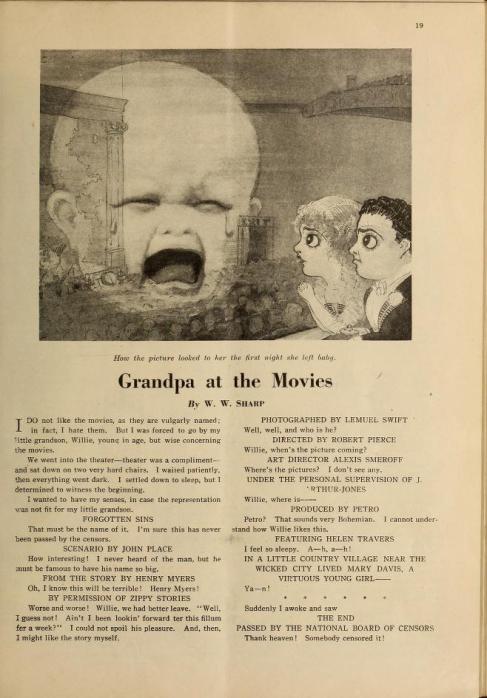Solving the problem of a Danish Shakespeare film (1921)
March 11, 2014 § Leave a comment
Another intriguing tidbit of US silent cinema exploitation in the 1920s. This is the problem: how to exploit a Danish version of Hamlet (there is a version on YouTube…) that features  Asta Nielsen in a female version of the title role (to paraphrase Laurence Olivier: “this is the story of [a girl who was] a man who could not make up his mind”). The film clearly has potential (Nielsen is a recognised star; it has literary tradition behind it, even if it does not draw directly from the play…).
Asta Nielsen in a female version of the title role (to paraphrase Laurence Olivier: “this is the story of [a girl who was] a man who could not make up his mind”). The film clearly has potential (Nielsen is a recognised star; it has literary tradition behind it, even if it does not draw directly from the play…).
The solution: live reciting of the lines during the film is the answer – a multimodal performance that may not have been Shakespeare, but was certainly quite a sensory pleasure:
Asta Films, Inc., in conjunction with National Arts of America, announced this week the presentation at the Lexington Theatre on Nov. 7 of the motion picture production of Hamlet, which is creating a sensation in Europe. This production is based upon the old legend of “Hamlet” from which Shakespeare drew his first conception of the immortal tragedy, and upon the conception of Hamlet in the book, “The Mystery of Hamlet,” by the late Edward P. Vining.
The players who appear in this picture are celebrated European stars, headed by the famous Danish tragedienne Asta Nielsen. This will be the first showing in America of this great artist’s work. She is one of the best known artists in Europe.
The production is said to be an elaborate and artistic one, and is faithful to the time and place. It will be presented with an elaborate musical setting, specially composed and arranged for it, by a large symphony orchestra. Scenes from Shakespeare’s “Hamlet” will be given during the progress of the picture by an interpreter of Shakespeare.
From The Exhibitor’s Trade Review vol. 10 n. 23, Nov. 5, 1921, p. 1590 (as always, from the invaluable Media History Digital Library).
Open Peer Review Process, from Palgrave Macmillan
February 19, 2014 § Leave a comment
Palgrave Macmillan is trialling an open peer review process until 7 March. They have a few books available (4 under “Culture and Media”), and where it seems particularly interesting to me is that this is less peer review as “inviting feedback” and thus allowing for works in progress to be further developed. Jason Mittell tried a similar experiment in 2012 for the publication of his book Complex TV, and MediaCommons has of course lots of other texts opened for scholarly review and feedback (including the White Paper on their study of Open Review practices, together with NYU Press) — but still, it’s nice to see an established publisher get on board.
Ballyhoo ain’t dead — the research project
January 24, 2014 § 1 Comment
One of the fun things about studying things historically is to realise how modernity is laced with the past — intersected, habited, haunted. Not in the sense of plus ça change, more in the sense that the “new” carries with it undertones of leads already explored, of thoughts already spoken, of directions already tried — in a quasi-biological sense. The now, in science-fiction terms, is merely one of the possible futures that the past has developed — but it bears the traces of what might have been — tantalising, inviting us to invent tomorrow.
So we now call it “viral marketing”, or even “prankvertisement”, but it is ballyhoo back from the 1920s, promotional stunts that are meant to get people to talk about the film, at all possible cost. And just like ballyhoo, it is, at the very least, about rehearsing audiences’ media competencies — working on that border between the fake and the real, helping them (us) put reality in play. This training of media competencies, then, goes back a long way — the “magic” of new media technologies more a skill we entertain than an innate quality of any medium. Viral marketing, then, takes the Barnum hoax (Barnums’ “operational aesthetics”) to new, more modern, heights: “is it fake, or is it real?” It is the same question, it is the same game — but realising that we’ve been playing this game for at least 200 years (much, much longer than that: since the first time a human decided to make-believe that any piece of unbelievable information relayed in some form, oral, painted, etc., was potentially true) may help us enjoy it more — indeed, help us live with media fictions.
At most viral marketing (just like 1920s promotional stunts, though the technology, then, was different) asks hard questions about the nature of film-going, since it can be about transmedia storytelling expansion, furnishing bits of information to the main movie plot that help make sense of the movie world and expand it — hard questions about where the pleasures of “cinema” precisely lie. You may, for example, have felt (as I did) rather unsatisfied with the restricted world-building that the movie Elysium offered, notably the limited views of both Earth and the space station for the rich,

the way the movie restricted all economic activity on Earth to Matt Damon’s character’s factory job or his sweetheart’s nursing job (an economy based on just those types of low-skilled jobs would very soon crumble: what of the research, innovation, engineering jobs? How do these professionals feel about inequalities? About Elysium? How do they vote? These are all world-building questions, and what good sci-fi should be about as it attempts to build a model of a possible future). Indeed, it may be because that world-building was going on somewhere else: on the official website for the movie (www.itsbetterupthere.com), where there is[still, as of 24 Jan. 2014, but for how long?] a rich array of websites pretending to be from the construction company of the space station, complete with set-drawings blueprints of the homes one may “buy” on Torus. In lots of ways, the world-building that goes on with the promotional websites is more interesting than the movie itself — conventional, déjà-vu plot-driven fast-paced flick. And this raises the question, at least to me, of whether the film is not suffering from the fact that a decision was made to outsource lots of world-building material to the promotional campaign. Think about all the detailed world-building that went into the film itself of 2001, and made the experience of watching the film truly mesmerising. You’d have to start toying with the Elysium website before you’d start feeling the same level of amused amazement, the desire to stay in that world.
Incidentally, if the marketing is part of the fun of the film, it also raises the question of what happens to the film once that promotional material is gone (the anti-segregation blog “set up” by alien Christopher Johnson, a promotional stunt devised for District 9, for instance, has been archived, but the official link is dead) — and whether a true artist of viral marketing should not expand efforts into maintaining the fictional worlds they have set up for the film. Whether or not this would make any business sense, for the artist, would hopefully be irrelevant, though this points to a potential site of tensions here: the long-lasting relevance of a work, or the short-term, but powerful, vibration of meaning of a work encountering an audience? What if the second burst, though ephemeral by definition, could be made to last? A film like 2001 has no problem recreating its own flash of relevancy for a modern audience–but couldn’t there be another path to artistic longevity that promotional stunts, allied with new media tools, fast-speed networks, virtual reality equipment, and so on, could trace in the future of the industry? Prometheus may have been a disappointing film (haven’t seen it), but the website still looks good, inviting, tantalising — magic of sort, yes.
Prometheus may have been a disappointing film (haven’t seen it), but the website still looks good, inviting, tantalising — magic of sort, yes.
All of which makes me wonder if there is not more creativity being now expanded into the promotion — and less into the films themselves — and if the true evolution of transmedia storytelling is not just that the film fictions expand into other media, or that the films serve merely as events to launch a new line of merchandising, toys, TV series, and other products, as we are all quite aware — but that, more profoundly, the films serve as launching pads for the true fictional life of the stories that indeed take place somewhere else, in the promotional stunts. That the film becomes, in other words, a fictional virtual space more than a text. That maybe we need to think about a future where the film is reduced to a clickable link (“You Don’t So Much Watch it As Download It”) on a website where lots of other material build a detailed and amazing fictional world — where the film is one possible activation of the fictional world, which remains however open to other narrative possibilities through the world-building the websites offer. Given that promotional budgets may come to dwarf production budgets, this would not be such a surprising evolution after all–an evolution where film, “cinema” as we used to call it, expands its “interface” from a screen (a movie screen at first, a TV screen next, a mobile screen now) to a space (cyberspace, virtual reality).
The research project: to trace the development, history, genealogy, variations, evolutions of ballyhoo, promotional stunts, prankvertisement as the interface of cinema — from 1920s carnival to Torus, as cinema’s privileged world-building tool, en route to our future(s) where living with virtual realities is going to be loads of fun.
Silent cinema : the universal art ?
January 22, 2014 § Leave a comment
[UPDATE Jan. 22 2014: this was written back in July 28, 2009. Still worth a post I reckon, though the film referenced may be a bit obscure.]
Remember those ecstatic pronouncements of silent cinema as the New Esperanto ? Was going to save world peace ! Was going to make humanity One ! Would convert the Czar of all Russias to judaism (not really, just throwing this one in) !
Turns out, this depends on where you’re sitting. If you’re from Hollywood, the world may have looked remarkably flat as early as the 1920s. But a Russian émigré living in France in 1920 may have had a different view : consider the titles from Jakov Protazanov’s L’angoissante aventure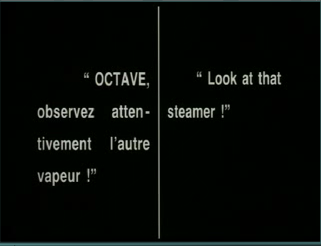
Back to Babel it is with the pesky problem of the intertitles.
But it’s not just the intertitles that erect conventional barriers to universal meaning. I defy anyone outside of the tight-knit émigré circles of expatriate Russia to understand the man’s expression as he reacts to the woman’s innocuous enough pronouncement (granted, I haven’t seen the film):
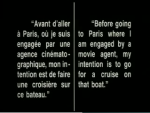
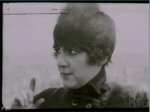

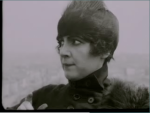

I don’t want to think how Peoria, Kansas would have taken that look. Bottom line: there is not one universal meaning, or one universal audience, in films. Not then, and not now.
Another interesting conf if you have the time
January 14, 2014 § Leave a comment
Won’t have the time to submit though couldn’t agree more with the assumptions in this CFP.
ACTUALLY (self-promotion plug coming up) 🙂 I have something due for publication this year that explores how Hollywood cinema of the 1920s can be construed, through radio and fanzine re-mediation, to also “take place” in a domestic environment — would fit right in with the concerns of the conference…
Begin forwarded message:
Date: 14 Jan 2014 08:46:01 GMT
CALL FOR PAPERS
‘Media and Place’
School of Humanities and Cultural Studies
Faculty of Arts, Environment and Technology
Leeds Metropolitan UniversityTo celebrate the launch of the new ‘Media and Place’ Masters programme, we are pleased to announce our conference on the 11-12th July 2014.
Confirmed Keynote speakers:
Prof Shaun Moores (University of Sunderland); Prof Kevin Hetherington (The Open University); Prof Helen Wheatley (University of Warwick)Media operate in settings and environments: they exist in place. Some media spaces we occupy feel like home – listening to our favourite radio stations while we drive to work – while others enable virtual travel across vast physical spaces to different geographical locations. Media can escort us in an instant from the glamour of the global city to the minute, quotidian details of life lived at the local. Television’s liveness can gather very different people in the same physical space or draw together disparately located audiences around political events, sports tournaments and ecological disasters. Film makes possible different versions of the same city, multiplied as it filters differently through the eyes of the director to the audience. Media can blur the boundaries between the private and the professional, transform domestic boundaries into global businesses, and offer individual opportunities for public confessionals. New media connect us across continents with friends, loved ones and those we’ve never met. Yet place is always more than a location on a map; it is lived and experienced through repetition such that some places become laden with meanings of belonging and affective attachment. In what ways does place matter to the media? How far do we inhabit or live inside the media we use? Or rather, has the electronic world created a culture of placelessness? This inter-disciplinary conference welcomes researchers and practitioners from media and cultural studies, urban history, post-colonial studies, gender studies, urban sociology, cultural and phenomenological geography, politics, political economy, philosophy, social and cultural theory, cultural policy, anthropology, town planning, architecture, design, visual arts and ecology.
Conference themes
Themes and issues that the conference seeks to cover include (but is not limited to):1. The cultural representations of land and urbanscapes across time and space;
2. Media and other representations of place and in particular of the North of England;
3. Transitory and marginalised spaces – suburbia, media as navigation, disadvantaged and stigmatised neighbourhoods, urban fringes, places en route;
4. Urban arts and media responses to the economic crisis post 2008, including – issues of cultural activism, resistance and culture-led regeneration;
5. Theories of rural and urban media mindscapes and imaginaries and of media, place and affect;
6. Drama, literature, cinema and television of the North: Kes, East is East, Last of the Summer Wine, The Red Riding trilogy, Wuthering Heights, Haweswater, Fat Friends …..
7. Post-colonial/global city spaces, hybrid and intercultural uses of media in urban and rural places;
8. Guerilla gardening, ecological DIY protest, pop-up urbanism, the emergence of new informal cultural venues and other grassroots interventions in urban and rural environments;
9. Digital technologies and new uses of urban and rural space;
10.Disruption, artistic intervention and subversive tactics (eg in post-communist countries in Eastern and Central Europe);
11.Transport, communication networks as media spaces;
12.Utopian/dystopian places;
13.The reputation of places in austerity times;
14.New media and spaces of protest, conflict and subversion.
15.The places and practices of sporting media (eg. Le Tour de France, the Paralympics, the World Cup);
16.Bottom-up, participatory urban and rural media and cultural policies.Publication
The conference organisers are liaising with Palgrave MacMillan with a view to collecting selected conference papers together in an edited collection for publication in 2015.Submission of abstracts
The conference organisers welcome proposals for single papers and panels of up to three papers. Please send short proposals of no more than 300 words tomediaplaceconf2014, by 1st February 2014 including a title, abstract, the theme your paper speaks to and your affiliation details.
Ballyhoo ain’t dead — another research project
January 8, 2014 § Leave a comment
A study of ballyhoo, from the 1920s to today (the Carrie stunt at a New York café, october 2013):
- a resurgence today, after decades of marginalisation of ballyhoo promotion to “disreputable” exploitation movies?
- if so, why a resurgence in new media today? Are we re-discovering a sense of media magic due to new technologies?
| Sent from Evernote |
Recall: a research project
January 8, 2014 § 2 Comments
any work done on the process of recalling a film? On what magicians call “reconstruction” and which is thought of as part of the whole magic trick (as in, it is important that audiences remember the trick as magic, not as a method easily explained)?
—> looking at 1920s novelised versions of films as “reconstruction” process that draws attention to the magic of the film?
how about the issue of ‘misremembering’?
an audience study (through questionnaires etc.) of audience recall of films?
are there films that audiences remember better than others
is recall linked to how attentive audiences are
what do audiences recall? what do audiences not recall?
recall vs reconstruction of films
recall and film narrative strategies
| Sent from Evernote |
Mapping the correlation of cinema shows with magic shows
October 1, 2013 § Leave a comment
Early days (started June ’13) of a mapping project to track the criss-crossing and potential correlation of magic shows with movie shows in 1920s Colorado. Yes, only two entries so far, and just barely learning to use the GIS software… Watch me grow!
Why Colorado, you ask? I do like the mountains, but even more, I like the open-access digitized archive of local historic newspapers, the Colorado Historic Newspapers Collection, that has extensive coverage of newspapers up and until 1923 (copyright restrictions for later date, ach!), and which I can access from my home :-).
that has extensive coverage of newspapers up and until 1923 (copyright restrictions for later date, ach!), and which I can access from my home :-).
Digitial Humanities: 2 recent projects
September 26, 2013 § Leave a comment
